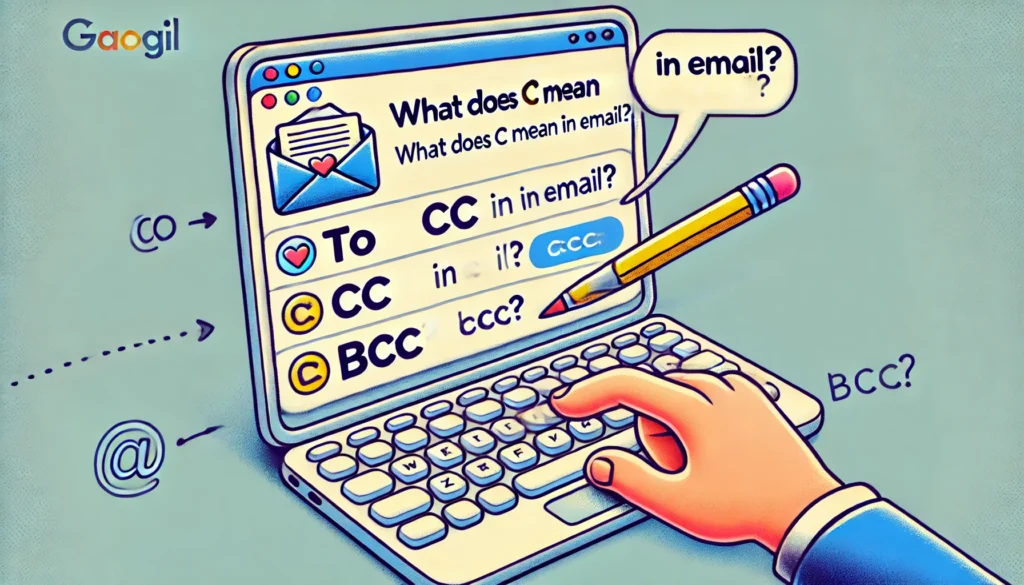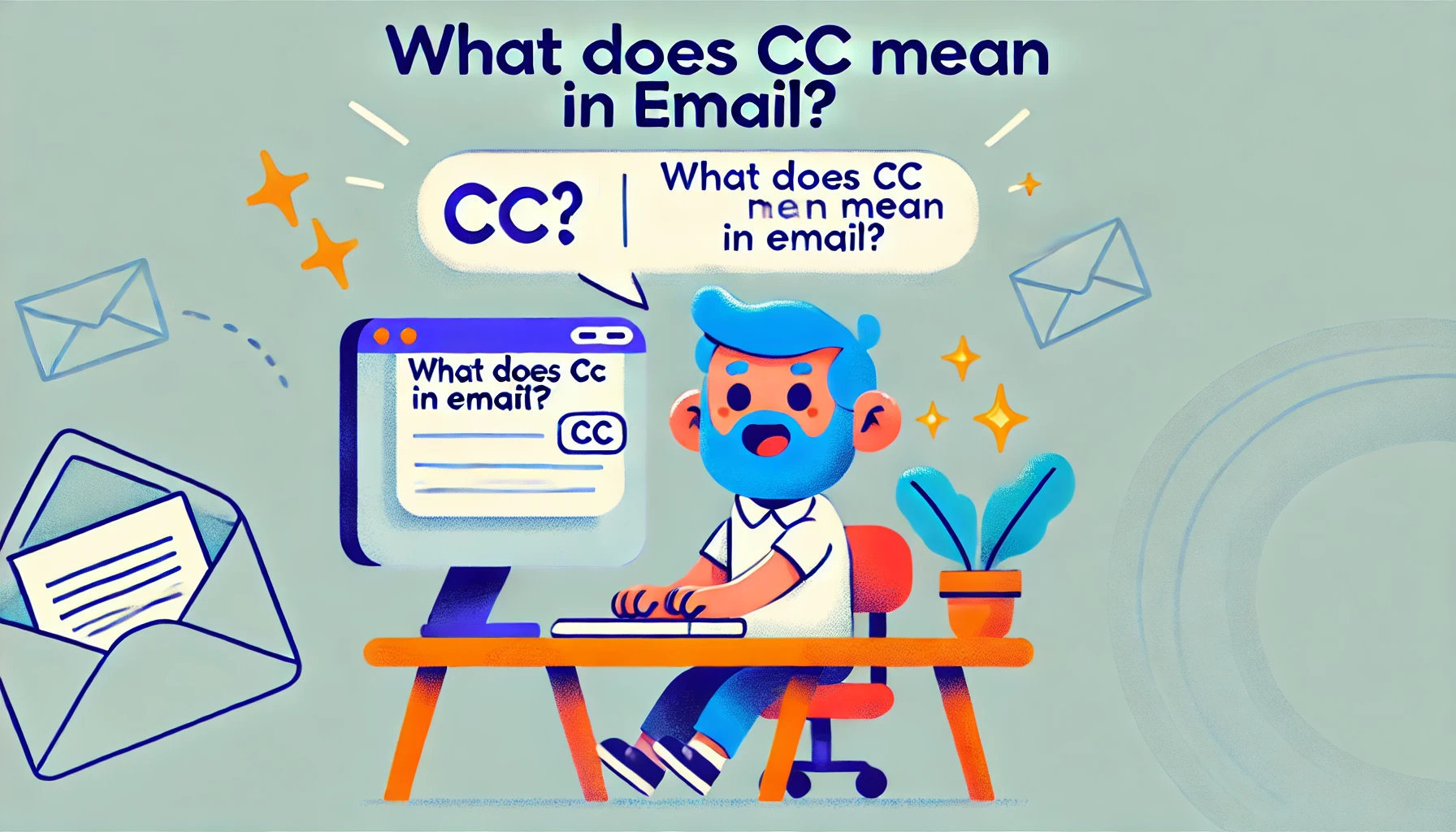CC is a common term used in email communication. It stands for “carbon copy” and is used to send a copy of an email to someone other than the primary recipient. This can be useful in many situations, such as when multiple people need to be kept in the loop on a project or when someone needs to be informed of an email without being directly involved in the conversation.
The use of CC in email has a long history, dating back to the days of typewriters and carbon paper. In those days, carbon paper was used to make copies of documents, and the term “carbon copy” was used to describe a copy made using this method. Today, the term has been adapted for use in email, where it serves a similar purpose of creating a copy of a message for someone other than the primary recipient.
Key Takeaways
- CC stands for “carbon copy” and is used to send a copy of an email to someone other than the primary recipient.
- The term has a long history dating back to the days of typewriters and carbon paper.
- CC can be useful in many situations, such as when multiple people need to be kept in the loop on a project or when someone needs to be informed of an email without being directly involved in the conversation.
The Basics of CC in Email
When sending an email, the “CC” field stands for “carbon copy,” which allows the sender to send a copy of the email to someone who is not the primary recipient. By adding email addresses to the CC field, those recipients will receive the same email as the primary recipient, but they will not be the main addressee.
The CC field is used when the sender wants to keep someone informed about the email but does not require a response from them. It is also used to include someone in the conversation without making them the primary recipient. For example, if a manager wants to keep their boss in the loop about a project’s progress, they might CC them on an email to the team.
In Gmail, the CC field is located below the “To” field when composing a new email. Users can add up to 100 recipients in the CC field for one email. It is important to note that when using the CC field, all recipients can see who else received the email, including the primary recipient and other CC recipients.
It is essential to use the CC field appropriately. Adding too many people to the CC field can clutter inboxes and lead to important emails being overlooked. Additionally, including someone in the CC field who does not need to be there can be seen as a breach of privacy. Therefore, it is necessary to ensure that all recipients in the CC field have a good reason to be there.
Overall, the CC field is a useful tool in email communication. It allows the sender to keep others informed without making them the primary recipient. However, it should be used judiciously to avoid cluttering inboxes and breaching privacy.
Historical Context of CC
The term “CC” stands for “carbon copy.” Before the advent of digital communication, people used carbon paper to make copies of documents. Carbon paper was placed between two sheets, and the pressure from writing or typing on the top sheet would transfer the ink or pigment onto the sheet underneath, creating a copy of the original document.
The use of carbon paper was common in offices, schools, and other settings where multiple copies of a document were needed. However, the process was time-consuming and messy, and it was difficult to make changes to the original document once copies had been made.
With the rise of email and other digital communication technologies, the concept of “CC” was adapted to the new medium. In an email, “CC” allows the sender to send a copy of the message to someone who is not the primary recipient. This can be useful in situations where multiple people need to be kept in the loop, or where someone needs to be informed of a message without being directly addressed.
The use of “CC” in email has become ubiquitous, and it is now a standard feature of most email clients and services. However, the concept of “CC” has evolved beyond its original meaning of “carbon copy.” In addition to the traditional “CC” field, many email clients now include a “BCC” (blind carbon copy) field, which allows the sender to send a copy of the message to someone without revealing their identity to other recipients.
Overall, the historical context of “CC” reflects the evolution of communication technologies and the ways in which people have adapted to new tools and mediums. While the concept of “carbon copy” may be outdated, the use of “CC” in email remains an important and useful feature for many people and organizations.
How to Use CC in Professional Communication
When it comes to professional communication, using CC can be a powerful tool. However, it’s important to use it appropriately and effectively. In this section, we’ll discuss some etiquette and best practices for using CC in professional communication, as well as some common mistakes to avoid.
Etiquette and Best Practices
When using CC in professional communication, it’s important to keep in mind some key etiquette and best practices. Here are a few tips to keep in mind:
- Only CC relevant parties: When sending an email, make sure to only CC individuals who are relevant to the conversation. Overuse of CC can lead to confusion and clutter in inboxes.
- Use CC to promote transparency: CC can be used to promote transparency within a team or organization. When you CC relevant stakeholders on an email, it helps keep everyone informed and aligned.
- Be clear in your communication: When using CC, make sure to be clear in your communication. State why you are including the recipient in the email and what you expect from them.
- Use CC sparingly: While CC can be a useful tool, it’s important to use it sparingly. Overuse of CC can lead to a cluttered inbox and can be seen as unprofessional.
Common Mistakes to Avoid
While using CC can be beneficial, there are some common mistakes to avoid. Here are a few mistakes to keep in mind:
- Using CC for CYA (Cover Your Ass): CC should not be used to cover your own back or to shift blame. Only CC individuals who are relevant to the conversation.
- Including too many people: Overuse of CC can lead to confusion and clutter in inboxes. Make sure to only include individuals who are relevant to the conversation.
- Not being clear in your communication: When using CC, make sure to be clear in your communication. State why you are including the recipient in the email and what you expect from them.
- Using CC to escalate an issue: CC should not be used to escalate an issue. If you have a problem with someone, it’s better to address it directly with them rather than using CC to involve others.
By following these etiquette and best practices, as well as avoiding common mistakes, you can use CC effectively in your professional communication.
Technical Aspects of CC
CC Functionality in Email Clients
CC is a standard email feature that is available in almost all email clients and web-based email services. It is a simple and effective way to include other people in an email conversation. When you CC someone on an email, they receive a copy of the email, along with everyone else who was included in the “To” field.
Most email clients have a dedicated field for CC, which allows you to easily add recipients to the CC list. In some email clients, the CC field is hidden by default and needs to be enabled manually. For example, in Gmail, the CC field is hidden by default and can be enabled by clicking on the “Cc” link next to the “To” field.
Differences Between CC and BCC

While CC and BCC are similar in that they allow you to include other people in an email conversation, there are some key differences between the two.
CC stands for “carbon copy” and is used to send a copy of the email to someone who is not the primary recipient. When you CC someone on an email, everyone else who was included in the “To” field can see that person’s email address.
BCC stands for “blind carbon copy” and is used to send a copy of the email to someone without anyone else knowing. When you BCC someone on an email, their email address is hidden from everyone else who was included in the “To” and “CC” fields.
One of the main reasons to use BCC is to protect the privacy of recipients. For example, if you are sending an email to a large group of people who don’t know each other, you may want to use BCC to hide everyone’s email address from each other.
In summary, CC is a simple and effective way to include other people in an email conversation, while BCC is used to protect the privacy of recipients.
CC’s Impact on Email Culture
The use of CC in email has had a significant impact on email culture. It has made communication more transparent and accountable by allowing others to be aware of the content of an email without being directly involved in the conversation. This has promoted transparency within teams and organizations, making it easier for everyone to stay informed.
CC has also made it easier to share information with others. When someone is CC’d on an email, they receive a copy of the email and can stay up-to-date on the conversation. This has made it easier for people to collaborate on projects and work together more efficiently.
However, the use of CC can also have negative effects on email culture. For example, some people may use CC to show off or to make it seem like they are more involved in a project than they actually are. This can lead to unnecessary emails and distractions, reducing productivity and efficiency.
Overall, the impact of CC on email culture is both positive and negative. It has made communication more transparent and efficient, but it has also led to unnecessary emails and distractions. As such, it is important to use CC wisely and with consideration for others.
FAQ
1. What does “CC” stand for in email?
“CC” stands for “Carbon Copy.” It refers to sending a copy of an email to someone other than the primary recipient(s).
2. What is the purpose of using CC in an email?
The purpose of using CC is to keep additional recipients informed about the contents of the email without making them the main recipient.
3. How is CC different from BCC?
- CC (Carbon Copy): All recipients can see who else has received the email.
- BCC (Blind Carbon Copy): Recipients cannot see who else has received the email in the BCC field, providing privacy.
4. When should I use CC in an email?
Use CC when you want to include someone in the email conversation for informational purposes but they are not the primary recipient.
5. Can CC recipients reply to an email?
Yes, CC recipients can reply to the email. If they use “Reply All,” their response will go to all recipients, including those in the CC field.
6. Is it appropriate to use CC for large groups?
It’s generally better to avoid using CC for large groups to prevent cluttering everyone’s inbox and to maintain privacy. Consider using a mailing list or the BCC field instead.
7. How do I add someone to the CC field in Gmail?
- Open Gmail and start composing a new email.
- Click on “CC” next to the “To” field.
- Enter the email addresses of the people you want to CC.
8. What are the etiquette rules for using CC?
- Only CC those who need to be informed.
- Avoid overusing CC to prevent spamming recipients.
- Be mindful of the sensitivity of the information being shared.
9. Can I CC myself on an email?
Yes, you can CC yourself if you want to keep a copy of the email for your records.
10. Does the order of email addresses in the CC field matter?
No, the order of email addresses in the CC field does not affect the delivery or visibility of the email.
Feel free to reach out if you have more questions or need further clarification!




